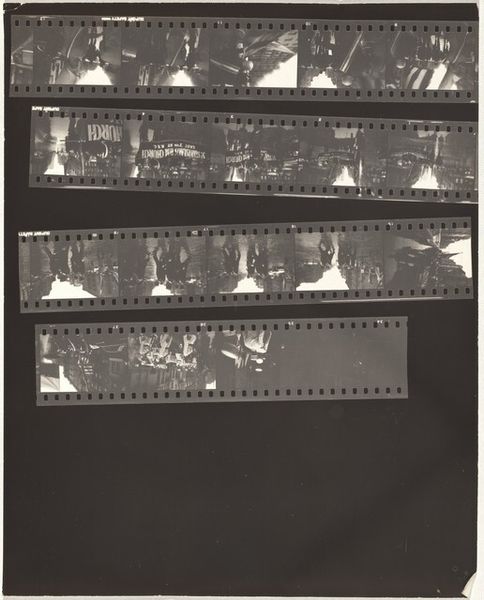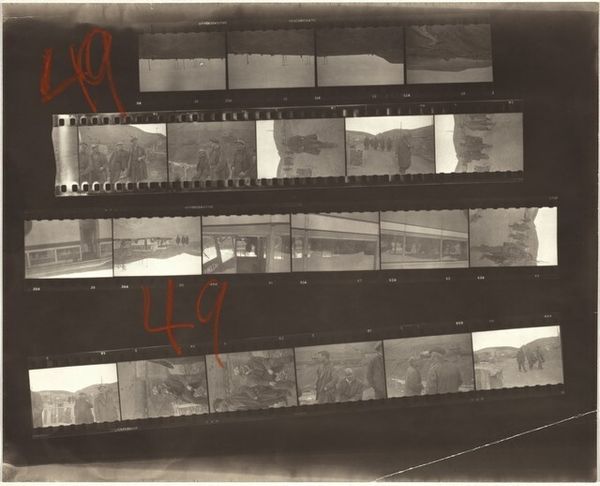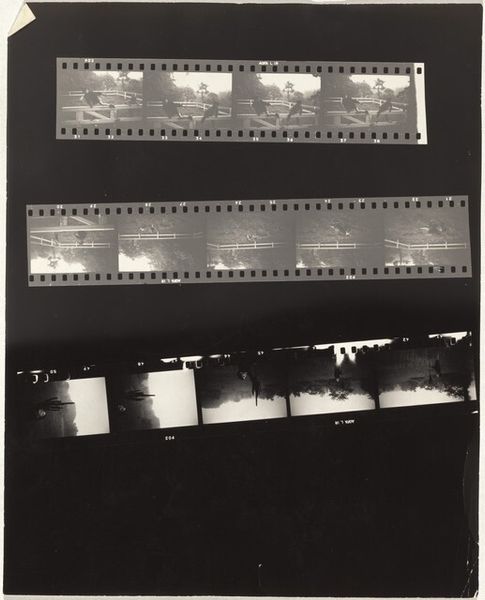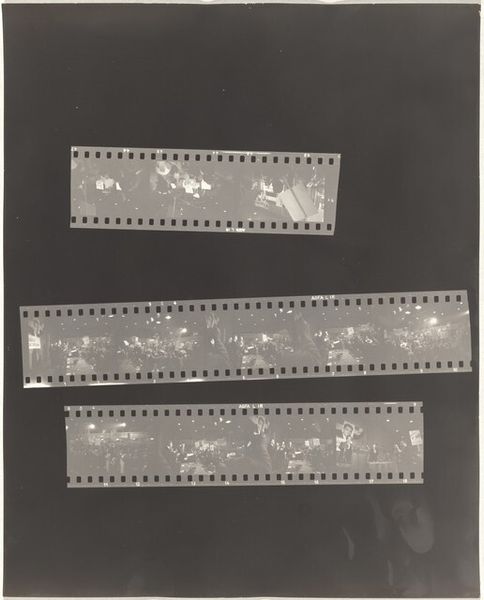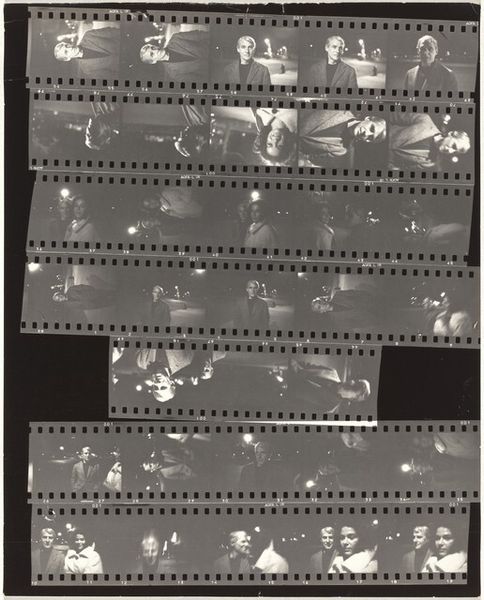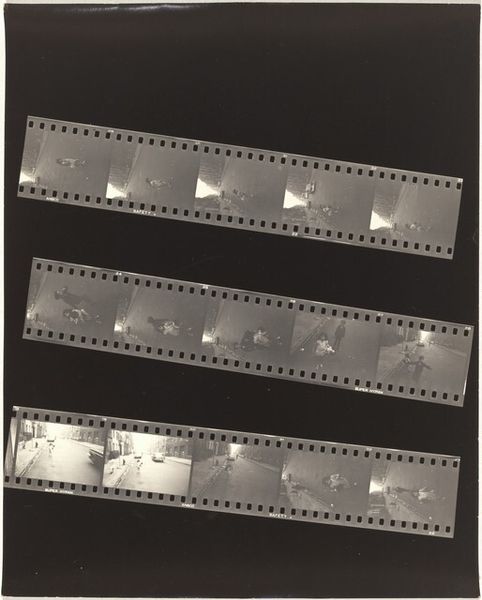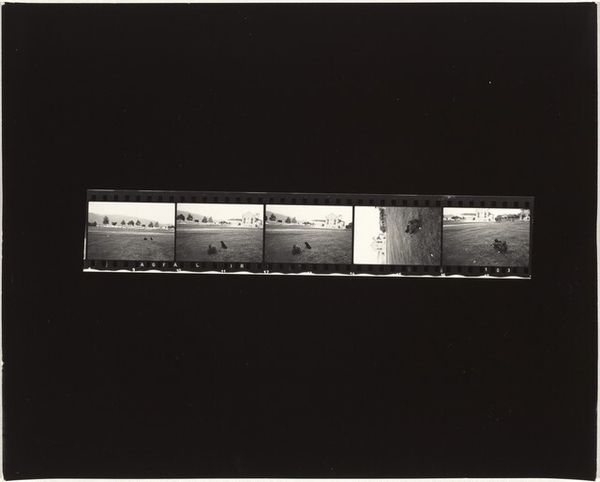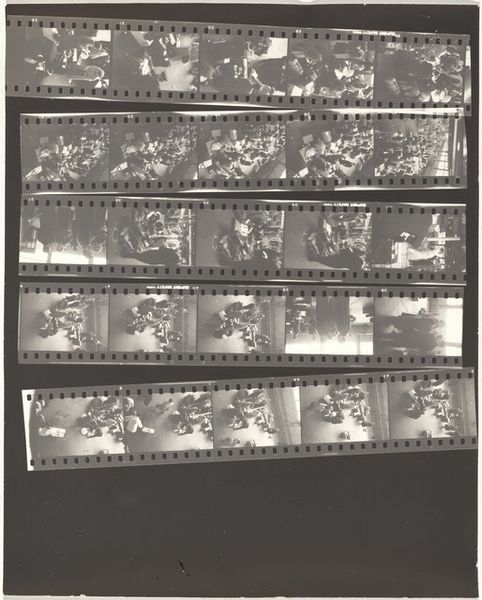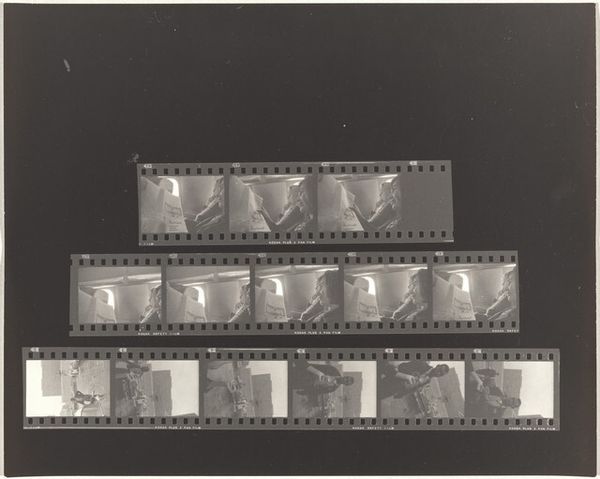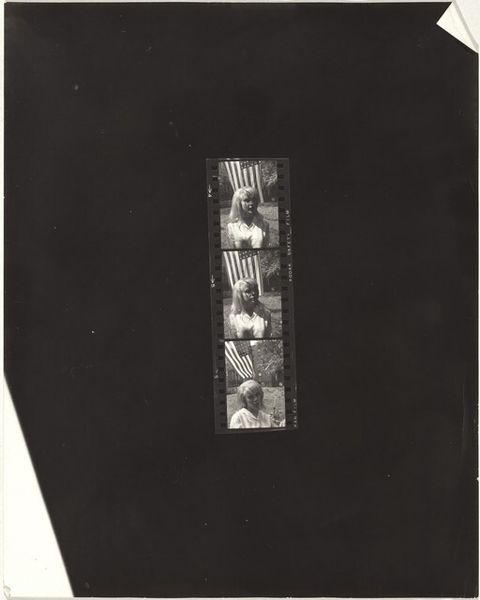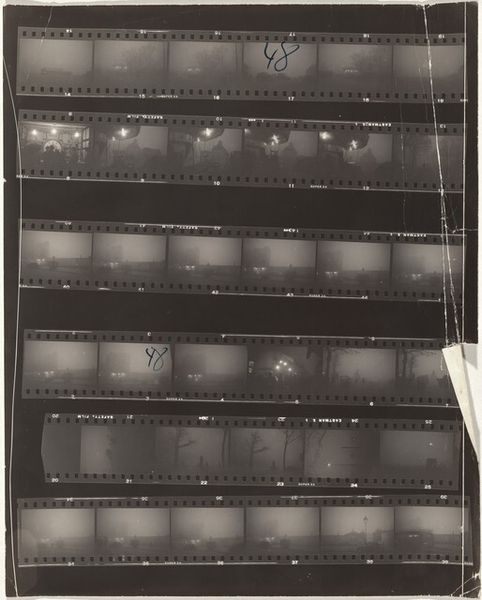
Dimensions: overall: 25.2 x 20.3 cm (9 15/16 x 8 in.)
Copyright: National Gallery of Art: CC0 1.0
Curator: Let's turn our attention to Robert Frank's gelatin silver print, "Jack Kerouac and flamingos--Florida no number," created in 1958. The work features two strips of what seem to be the artist's film roll. Editor: It has a striking starkness. The contrast between the almost brutally dark background and the fragile strips creates immediate tension. There's an undeniable melancholy too, as if these are remnants or traces of something lost. Curator: Precisely. Consider the materiality of it. Frank's choice to display the photographic strips raw, unedited, calls attention to the process. The perforations, the frame numbers, they're all laid bare. There's a structural honesty. Editor: Yes, honesty, but consider what it conveys. Flamingoes are icons of the Florida landscape and also markers of a very brief era in Florida's popular culture, where cheap tourism offered fleeting visions of paradise. Displaying Jack Kerouac's traces alongside them brings together icons of counter-culture on a parallel journey towards obsolescence, the Beat generation, or Florida's false promise of sunny optimism. Curator: That relationship creates interesting pictorial contrast: One strip blurry and barely readable above and one repeating clearly legible flamingo scenes below. Are we seeing perhaps the struggle and fleeting nature of capturing experience versus something staged? The technical effect yields more than simply legibility. Editor: Maybe, or maybe there's a psychological landscape emerging; the top strip becomes something like memory--fleeting, elusive--while the flamingos are clear, like established narratives that risk oversimplifying complex places. It's an emblem of a deeper exploration. Frank seems to invite us to challenge those surface level images. Curator: An invitation encoded into the arrangement of forms and their inherent qualities. Fascinating how Frank distills cultural critique into a formal exercise. Editor: It is, ultimately, an exercise in cultural anthropology. We are compelled to examine both subject matter and cultural echoes, and to consider its historical relevance even now.
Comments
No comments
Be the first to comment and join the conversation on the ultimate creative platform.
